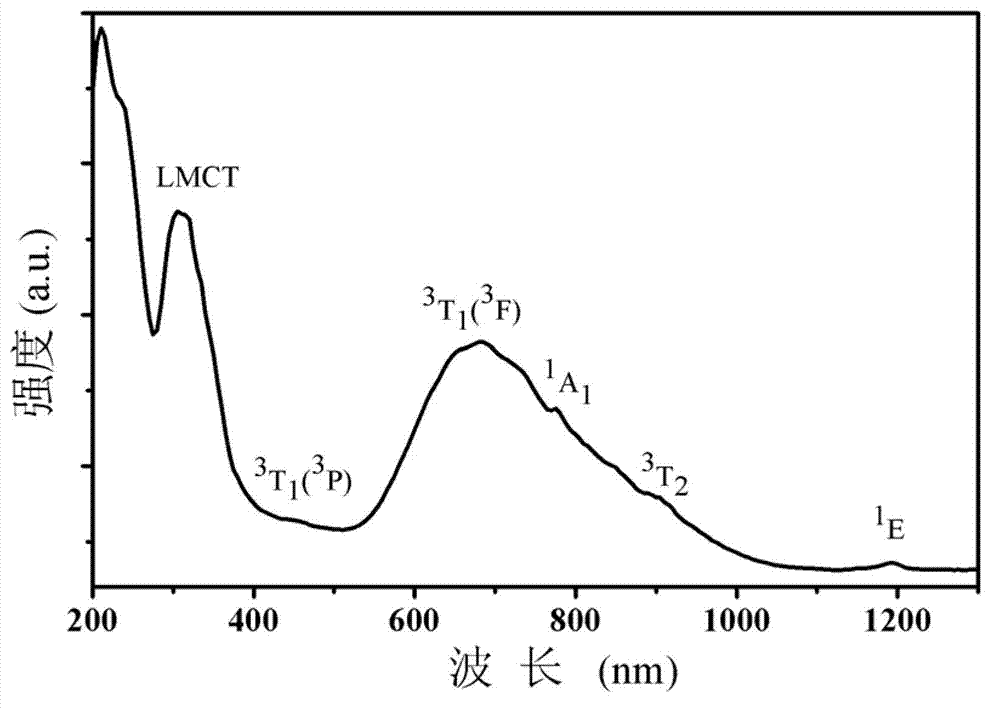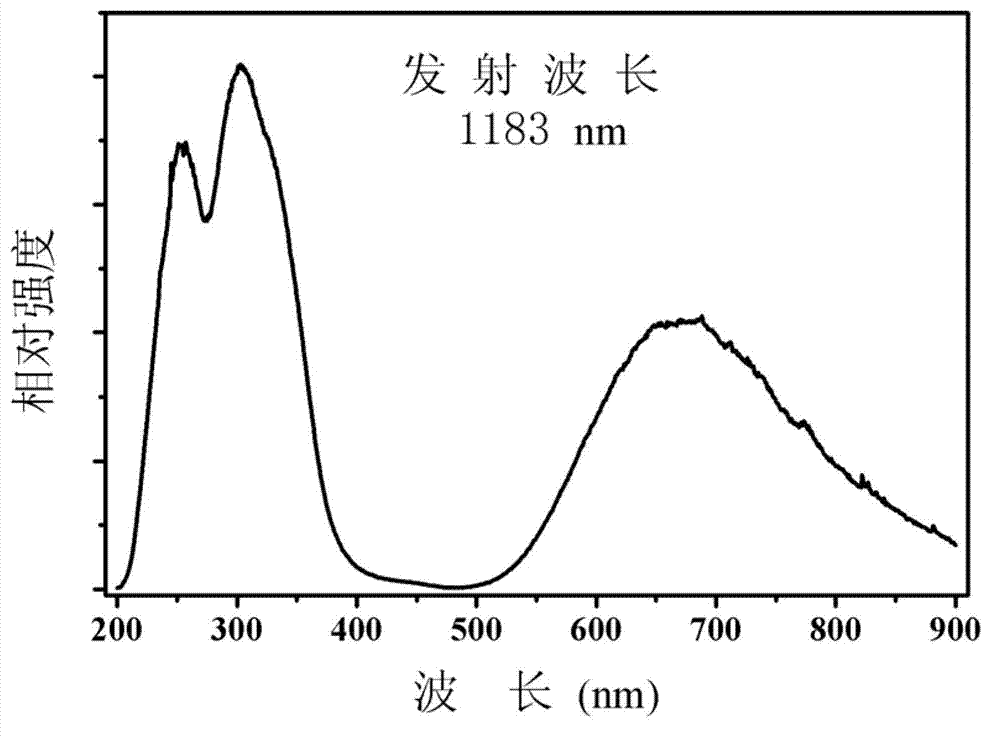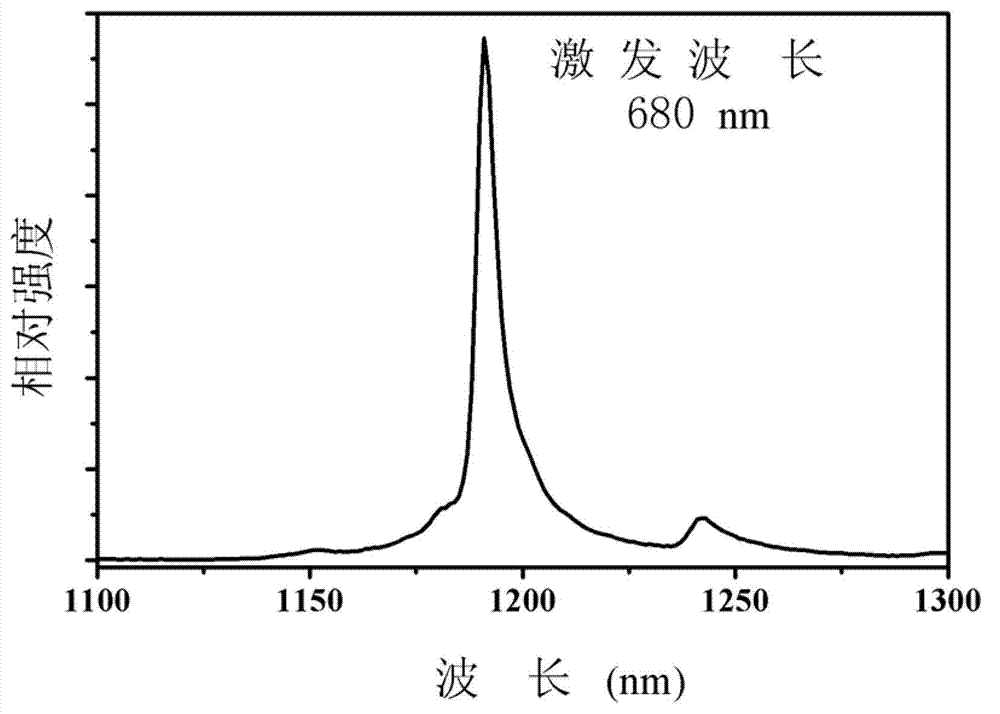Near-infrared luminescence bio-fluorescence labeling material and preparation method
A technology of luminescent biology and fluorescent labeling, which is applied in the direction of luminescent materials, chemical instruments and methods, etc., can solve the problems of narrow emission peaks, weakened optical properties, high research and production costs, and achieve excellent water resistance, good chemical stability, and preparation low cost effect
- Summary
- Abstract
- Description
- Claims
- Application Information
AI Technical Summary
Problems solved by technology
Method used
Image
Examples
Embodiment 1
[0033] Select barium carbonate, ammonium phosphate and manganese trioxide as starting raw materials, according to Ba 3 [P (1-x) mn x o 4 ] 2 (x=0.2, 0.5, 1, 1.5, 2.0, 2.5mol%) shown in the molar ratio, respectively accurately weigh the three raw materials, control the total weight of the mixture to about 50 grams. After 50 grams of the mixture were mixed by ball milling, they were put into a corundum crucible, and then the crucible was put into a high-temperature electric furnace. Precisely control the heating rate, control the decomposition reaction rate of the ammonium sulfate compound, prevent the mixture from overflowing from the crucible, and pre-fire the sample at 400°C for 5 hours. The pre-fired sample was taken out, ground and mixed again, put into a crucible, and fired at 1000° C. for 14 hours to obtain a pentavalent manganese ion-doped barium phosphate near-infrared luminescent material. Disperse the prepared near-infrared light-emitting phosphor powder in ethan...
Embodiment 2
[0036] Choose barium nitrate, diammonium hydrogen phosphate and manganese nitrate as starting raw materials, according to Ba 3 [P (1-x) mn x o4 ] 2 (x=0.2, 0.5, 1, 1.5, 2.0, 2.5 mol%) in the molar ratio, weigh the three raw materials respectively, and control the total weight of the mixture to about 50 grams. After 50 grams of the mixture were mixed by ball milling, they were put into a corundum crucible, and then the crucible was put into a high-temperature electric furnace. Precisely control the heating rate, control the decomposition reaction rate of the ammonium sulfate compound, prevent the mixture from overflowing from the crucible, and pre-fire the sample at 400°C for 5 hours. The pre-fired sample was taken out, ground and mixed again, put into a crucible, and fired at 1000° C. for 14 hours to obtain a pentavalent manganese ion-doped barium phosphate near-infrared emitting phosphor. Disperse the prepared near-infrared light-emitting phosphor powder in ethanol, and u...
Embodiment 3
[0038] Select barium chloride, ammonium dihydrogen phosphate and manganese chloride as starting materials, according to Ba 3 [P (1-x) mn x o 4 ] 2 (x=0.2, 0.5, 1, 1.5, 2.0, 2.5 mol%) in the molar ratio, weigh the three raw materials respectively, and control the total weight of the mixture to about 50 grams. After 50 grams of the mixture were mixed by ball milling, they were put into a corundum crucible, and then the crucible was put into a high-temperature electric furnace. Precisely control the heating rate, control the decomposition reaction rate of the ammonium sulfate compound, prevent the mixture from overflowing from the crucible, and pre-fire the sample at 400°C for 5 hours. The pre-fired sample was taken out, ground and mixed again, put into a crucible, and fired at 1000° C. for 14 hours to obtain a pentavalent manganese-doped barium phosphate near-infrared emitting phosphor. Using modern femtosecond laser technology, laser pulverization is carried out at a power...
PUM
| Property | Measurement | Unit |
|---|---|---|
| Diameter | aaaaa | aaaaa |
Abstract
Description
Claims
Application Information
 Login to View More
Login to View More - R&D
- Intellectual Property
- Life Sciences
- Materials
- Tech Scout
- Unparalleled Data Quality
- Higher Quality Content
- 60% Fewer Hallucinations
Browse by: Latest US Patents, China's latest patents, Technical Efficacy Thesaurus, Application Domain, Technology Topic, Popular Technical Reports.
© 2025 PatSnap. All rights reserved.Legal|Privacy policy|Modern Slavery Act Transparency Statement|Sitemap|About US| Contact US: help@patsnap.com



